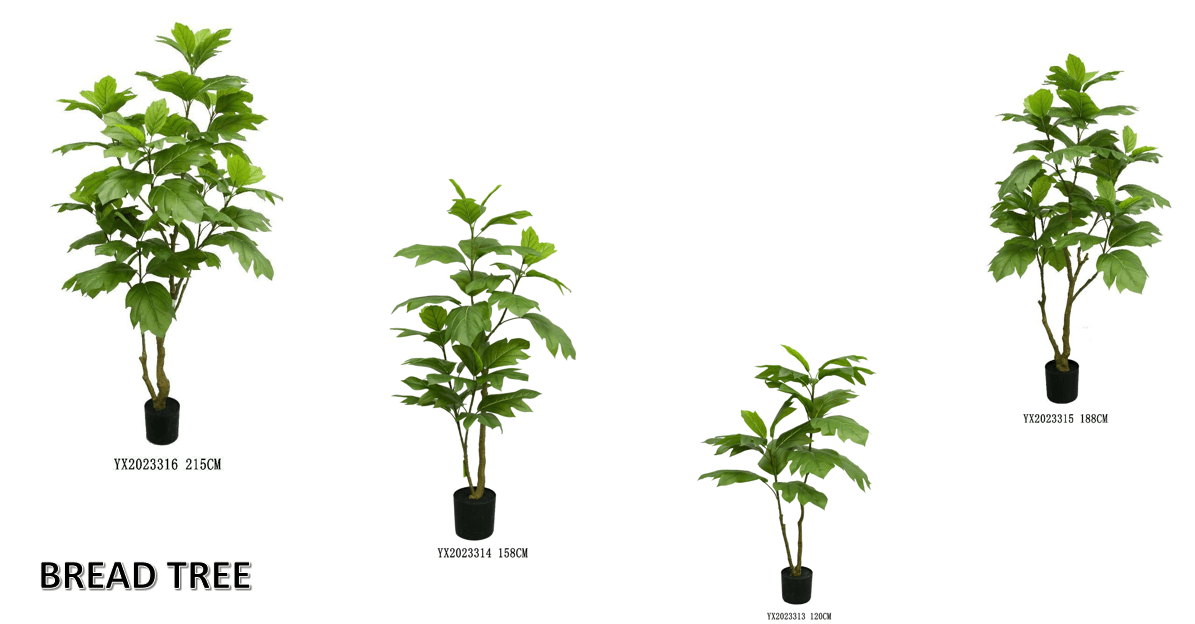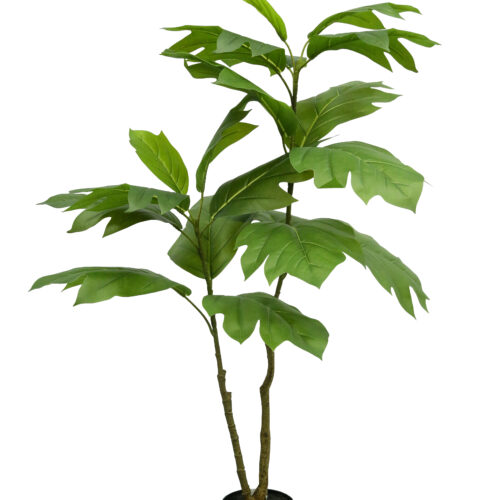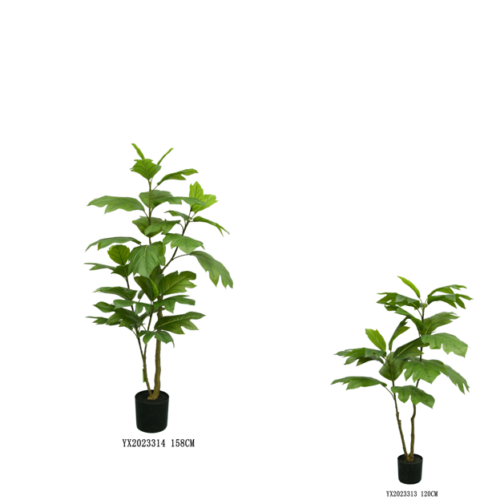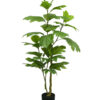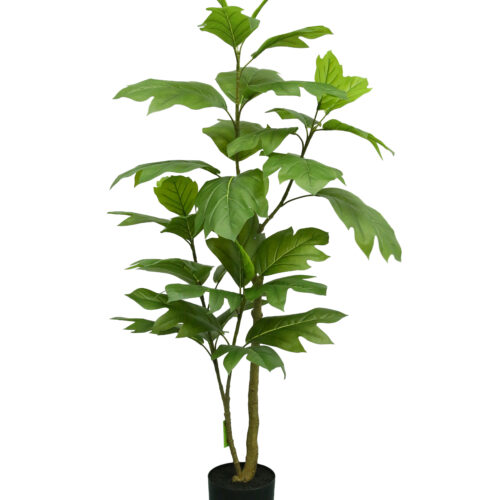19 LEAVES LEMON TREE
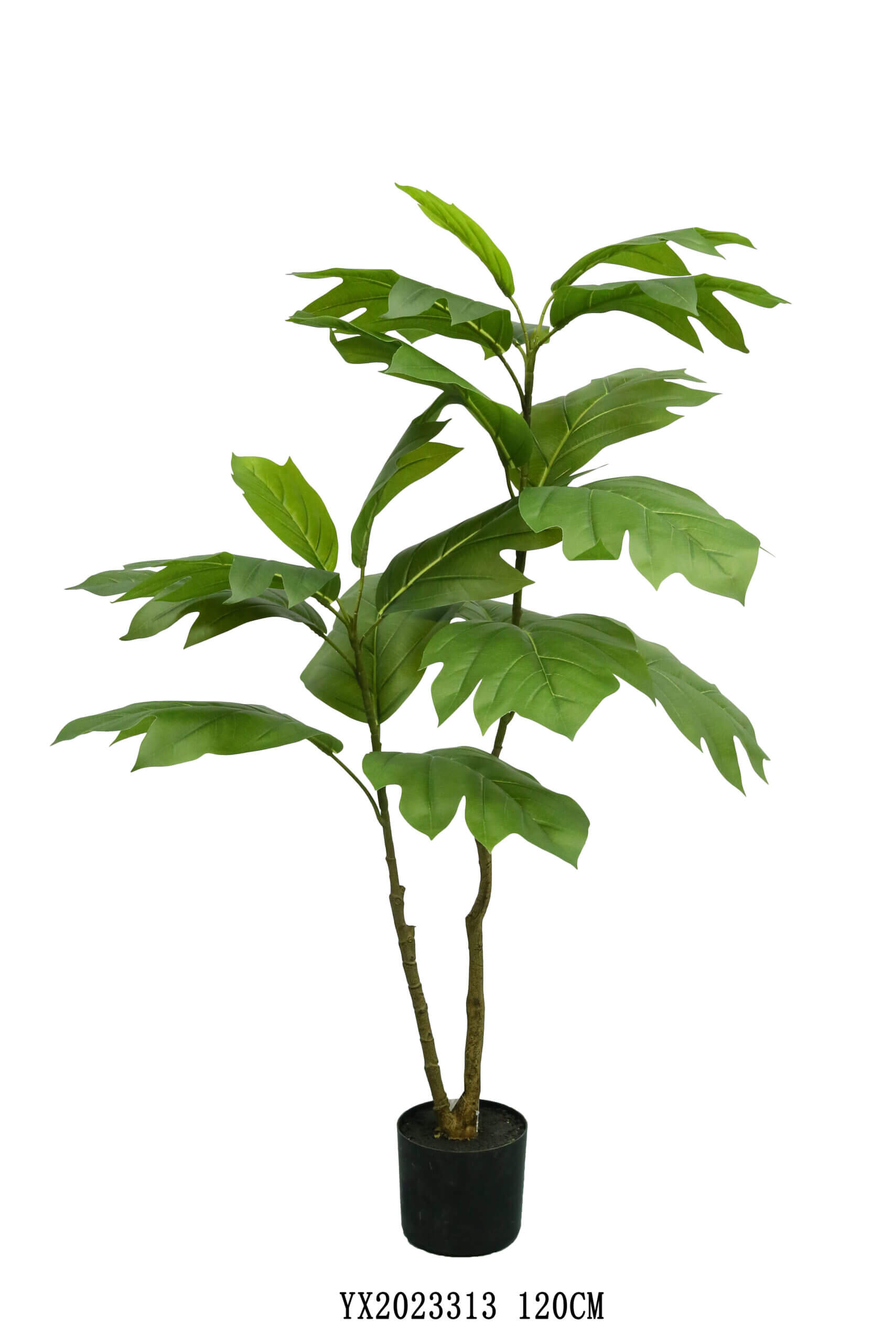

- Introduction
- Artificial breadfruit trees, as the name implies, are man – made replicas of the natural breadfruit tree (Artocarpus altilis). They are designed to mimic the appearance of the real tree for various purposes such as decoration, landscaping in areas where the real tree may not thrive, or for use in educational displays.
- Materials and Construction
- The trunk of an artificial breadfruit tree is usually made of materials like fiberglass, which provides a sturdy base. Fiberglass can be molded into the shape of a thick, rough – textured trunk similar to that of a real breadfruit tree. It can be painted in grey – brown colors to imitate the natural bark color.
- The leaves are often crafted from high – quality synthetic materials such as polyester or plastic. These materials can be shaped and colored to resemble the large, dark – green, and deeply – lobed leaves of the actual tree. The leaves are carefully attached to the branches, which are also made of a durable synthetic material and designed to support the weight of the leaves.
- For the artificial fruit, polyurethane foam is a common material. It can be molded into the large, round or oval – shaped breadfruits. The surface of the foam fruits can be painted to mimic the color change from greenish – yellow to brown as the real fruits ripen. The texture of the foam can also be adjusted to give a somewhat starchy feel similar to the real breadfruit.
- Uses
- In interior decoration, artificial breadfruit trees can add a tropical touch to homes, hotels, or restaurants. They can be placed in lobbies, atriums, or large living spaces to create a warm and exotic atmosphere. In shopping malls or commercial areas, they are used to enhance the aesthetic of the space and give customers a feeling of being in a more natural and inviting environment.
- In educational institutions such as botanical gardens or schools, artificial breadfruit trees serve as excellent teaching tools. They allow students to observe the structure of the tree up close without the limitations of seasonal changes or the difficulty of maintaining a live specimen. They can be used to teach about the characteristics of the breadfruit tree, its fruit, and its ecological role in a more convenient and accessible way.
- Advantages and Disadvantages
- One of the main advantages of artificial breadfruit trees is their durability. They do not require watering, sunlight, or other forms of maintenance like real trees. They can maintain their appearance over a long period, regardless of weather conditions or pests. Another advantage is their versatility in placement. They can be installed in any indoor setting, including areas with limited space or poor soil conditions

